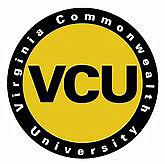VCU to open STEM center to aid area public school students
Jeremy M. Lazarus | 2/21/2020, 6 a.m.
Careers in science, technology, engineering and math are booming.
But the majority of today’s African-American, Latino and Native American students have not shown a serious interest in STEM fields or have not stuck with their interest in the fields as they become adults, national education statistics show.
The under-representation of such groups is the driving force behind the creation of a new Virginia Commonwealth University center seeking to usher in change.
With the MathScience Innovation Center losing local school funding and interest, the VCU School of Education on Monday announced the creation of the Center for Innovation in STEM.
The center’s purpose will be to work with Richmond Public Schools and schools across the region to advance an innovative and culturally responsive K-12 education that improves current offerings and makes them more palatable to students.
The goal would be to empower under- represented students — and the teachers who serve them — to engage in STEM learning experiences and become aware of STEM career opportunities, according to VCU.
The center would seek to show teachers ways to get students involved in hands-on exploration to learn how scientific phenomena affect the places they live and to consider how engineering solutions could make a difference.
To be based at the Science Museum of Virginia, the center’s focus will be on schools and students in Richmond, Petersburg, Hopewell and Colonial Heights, as well as high-need schools in Henrico and Chesterfield counties.
“We will leverage the resources, assets and talent of VCU to bring high-impact experiences for those who need it most,” said Dr. Al S. Byers, interim executive director of the center and STEM education visiting scholar at the VCU School of Education.
“We will infuse culturally responsive teaching practices and strategies to address the documented achievement gaps in STEM among minority students and women,” Dr. Byers said.
The center is being created as the number of African-American students and other minorities who are pursuing STEM careers continues to decline, according to data from the National Center for Education Statistics.
The data show that less than 15 percent of African-Americans, Hispanics, Native Americans and women earn undergraduate degrees in STEM fields.
Significantly, African-Americans and Latinos, who together represent around 30 percent of the U.S. population, constitute only 12 percent of students pursuing undergraduate STEM degrees and only 3 percent of those engaged in science, math and engineering careers after they graduate.
Most concerning, the national center’s data show that 48 percent of students who select a STEM major in starting college leave before graduation.
The data show that African-American students are the most likely group to start and then quit STEM studies, with 29 percent of such students dropping out and 36 percent changing majors to non-STEM fields.
“If students are not completing STEM- centric undergraduate degrees, they are omitted from pursuing greater STEM workforce opportunities,” said Dr. Byers, a former aerospace education specialist for the NASA Goddard Space Flight Center in Maryland and a former graduate student research fellow at the NASA Langley Research Center in Hampton.
“This limits their participation in many well-paid, high-growth professions,” he said, “and prevents our nation from ben- efiting from their perspectives, talents and creativity.”
More importantly, when African-Americans leave STEM fields, they no longer can influence the future, Dr. Byers said.
Today’s students in STEM “will be wrestling with challenges and opportunities such as reductions in biodiversity, climate change, clean oceans, energy sustainability, vulnerabilities of the internet, emerging and re-emerging infectious diseases, economic growth and space exploration,” he said.
The perspectives of African-Americans, Latinos and women in dealing with these issues will be reduced if they are not available, Dr. Byers said. “It is paramount that we help students learn to successfully analyze, evaluate and enact their collective response beyond their formative years.”






